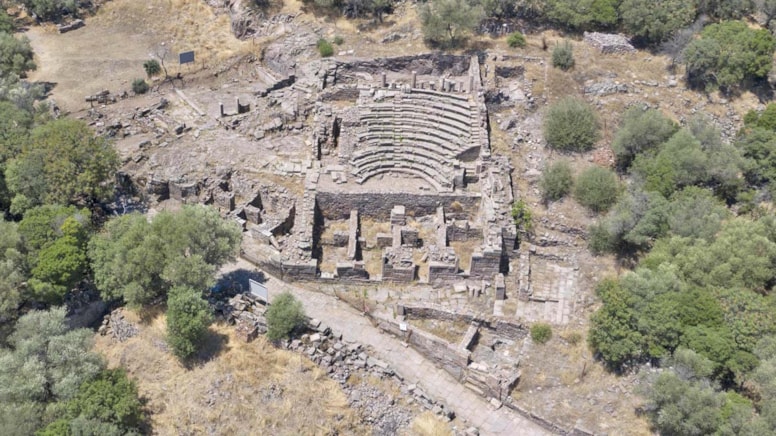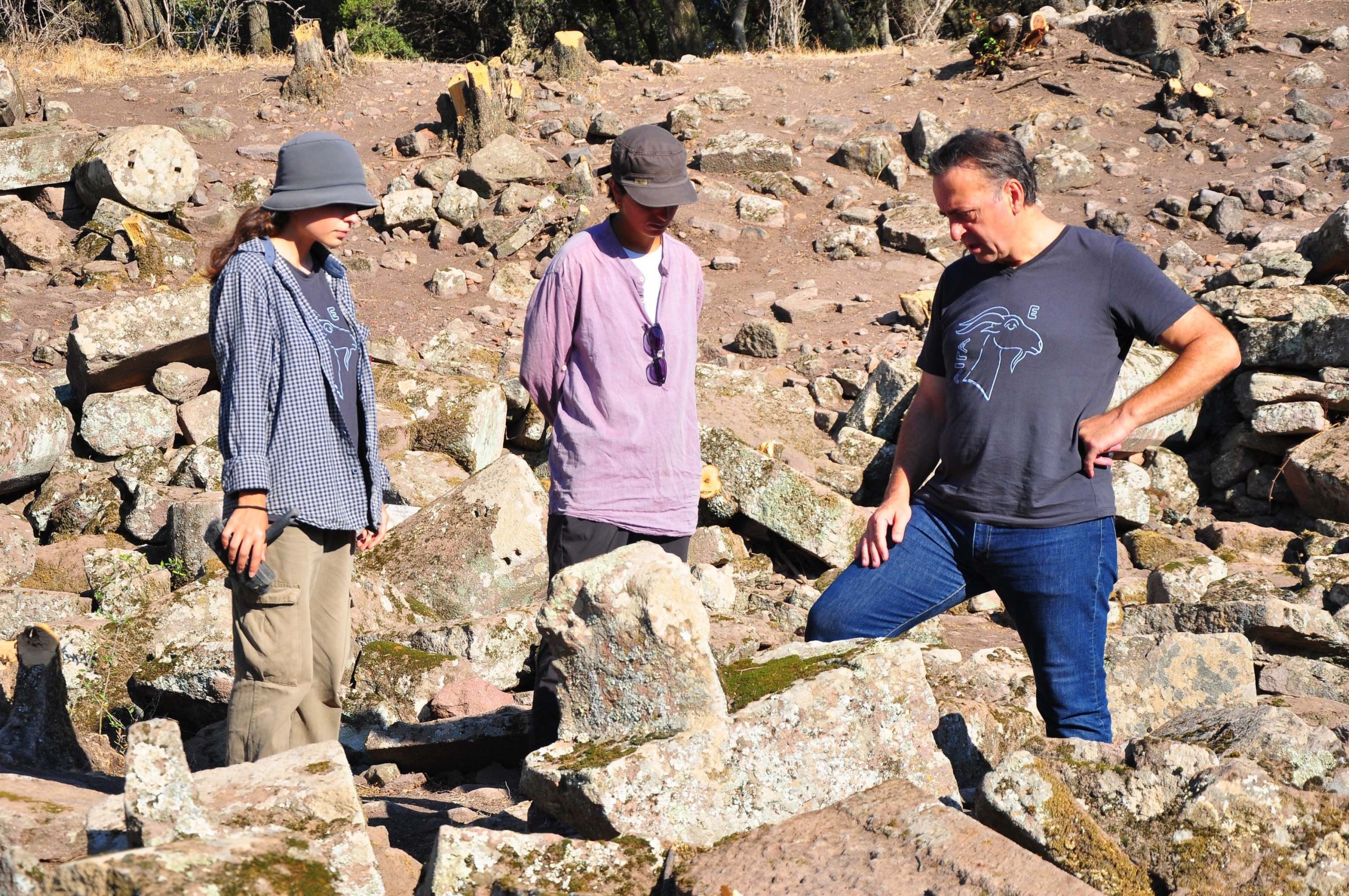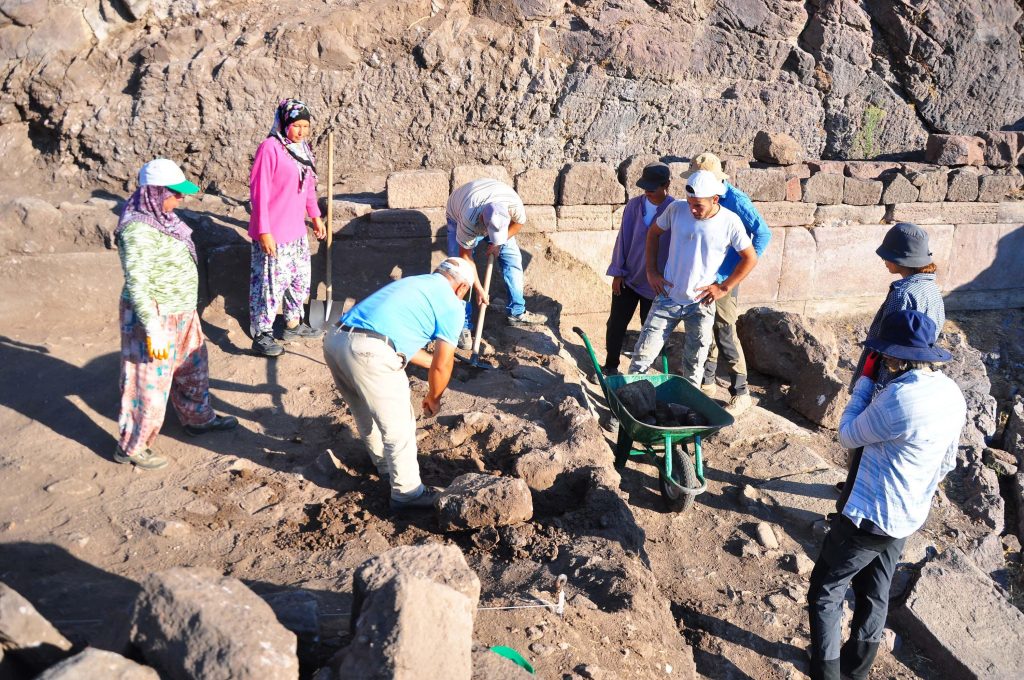
2200-year-old agora of the ancient city of Aigai on Yunt Mountain was found
A 2,200-year-old city square (agora) was discovered during excavations in the ancient city of Aigai in Manisa province in western Türkiye.
The excavations also found bull-headed reliefs on the columns in the square and inscriptions related to the god Apollo.
Founded on Yunt Mountain by the Aeolians in the 11th century BC, the ancient city of Aigai has survived for thousands of years despite being located in a mountainous geography far from the Aegean Sea.

Prof. Dr. Yusuf Sezgin, Head of the Department of Archaeology at Manisa Celal Bayar University and Head of Excavation, said: “This area is where all public buildings gathered and where people spent their daily lives. There are columned porticoes around the square, which we call ‘stoa’. In this respect, this is a very important area. One of the symbols of Aigai is the agora building in this area. We will carry out works especially in the parts of the building that need restoration and conservation.”

Yusuf Sezgin said, “We found reliefs with bull heads under the roofs of stoa (columned porticoes), which we are not very used to in the ancient world. We think they are important. Because these bull heads are usually depicted in relation to gods. We encountered examples in a few places in the ancient world. It is most likely related to Apollo. Because we also encountered inscriptions related to the god Apollo near the area where we are working. These types of stoas usually have a very simple architectural structure, but if it is associated with a votive offering, it is possible to think that the placement of these embossed bull heads is related to a ritual, to the gods. This may be related to a very important battle or an offering to the gods related to the reconstruction of the city.”
You may also like
- A 1700-year-old statue of Pan unearthed during the excavations at Polyeuktos in İstanbul
- The granary was found in the ancient city of Sebaste, founded by the first Roman emperor Augustus
- Donalar Kale Kapı Rock Tomb or Donalar Rock Tomb
- Theater emerges as works continue in ancient city of Perinthos
- Urartian King Argishti’s bronze shield revealed the name of an unknown country
- The religious center of Lycia, the ancient city of Letoon
- Who were the Luwians?
- A new study brings a fresh perspective on the Anatolian origin of the Indo-European languages
- Perhaps the oldest thermal treatment center in the world, which has been in continuous use for 2000 years -Basilica Therma Roman Bath or King’s Daughter-
- The largest synagogue of the ancient world, located in the ancient city of Sardis, is being restored











Leave a Reply